|
|
|||
|
Privacy Policy | Editorial Policy | Profit Policy | Join the Association | List of Members | Contact us | Index | Links |
|||
|
|
|||
|
RAAF Base East Sale.
(The pictures on this page have been crunched so they will open quicker. You can click a lot of them for a bigger and better quality view which you can download if you wish.)
RAAF Base East Sale is about 3 kilometres to the east of the significant regional centre of Sale, (Victoria) and is approximately 200 kilometres east of Melbourne. The City of Sale has a population of about 13,000.
|
|||
|
|
|||
|
The area around the township was discovered by an Angus McMillan in 1840. The first resident of Sale, then known as Flooding Creek, was Archibald McIntosh who set up a forge, store and butcher's shop making Flooding Creek a settlement. It grew from humble beginnings to become Gippsland's first city. Flooding Creek was renamed Sale in 1850 after General Sir Robert Sale, known for his part in the first Afghan war and who was killed in battle in 1845. Sale developed further around 1860 when it started to take on a more permanent appearance, benefiting from the Gold Rush around Omeo. Between 1883 and 1890 the Swing Bridge and Sale Canal were built, opening up the town to shipping.
|
|||
|
Sale Canal and boat harbour. |
|||
|
East Sale RAAF Base opened
as a training base on 22 April 1943. Initially, it was home to No.1
Operational Training Unit (1 OTU) equipped with Bristol Beaufort light
bomber aircraft which were relocated from airfields at West Sale and
Bairnsdale. The base was primarily responsible for training air crews,
but units from East Sale also operated in some convoy
In 1947, following the war, the RAAF Central Flying School was relocated
to Sale from Point Cook and in 1953, the school received its first De
Havilland Vampire. In 1962 four Vampires from CFS at East Sale formed
"The Red Sales" aerobatic display team but sadly, while practising
aerobatic routines on the 15th August, 1962, all four Red
Sales crashed in
On the 24th November 1987, the first two of the RAAF’s 67 Pilatus PC-9 aircraft arrived at East Sale. The Macchi Roulettes performed their last display in June 1989 and from then, apart from being the primary aircraft used by the Central Flying School, the PC-9 became the display aircraft for the Roulettes. A few months later the team was expanded from four to six members because the noise from the new aircraft didn't have as much impact as from the Macchis. You can see more info on the Roulettes HERE.
|
|||
|
The base currently has approximately 500 Service and 800 civilian staff and occupies an area of approximately 800 hectares. It has two sealed runways, one (04/22) is 7,995 ft long and the other (09/27) is 7,316 ft in length.
East Sale is reached by heading out of town, towards Bairnsdale and turning right into Raglan St which becomes Aerodrome Rd at the roundabout. Aerodrome Rd, which is nearly 2½ klms long and is bordered by lines of magnificent trees, has been declared the Avenue of Honour
|
|||
|
Aerodrome Rd ends at the main gate to the base, which unfortunately, due
to the current state of unrest and uncertainty that exists throughout
the world, has had to increase its level
|
|||
|
As is the norm at most Bases, Sale has an aircraft from yesteryear on display at its front gate and Winjeel A85-405 which entered service with the RAAF in 1955, keeps watch. Sadly no longer is it possible to get past the old Winjeel and enter the Base without being fully escorted and kept on a lead by a responsible person.
|
|||
|
We were lucky to have the very patient Carl Eves look after us. Carl met us at the gate in one of the RAAF’s new Commodore wagons and after a trip to the guard room where he put his life on the line and accepted responsibility for us, we boarded one of GM’s finest and commenced our tour at about 10.00am.
What is immediately evident is the number of wonderful old trees that dominate the base. East Sale is the home of numerous old Red Gums that, although not protected or endangered, are regionally significant and it has been decided that where-ever possible they will not be removed and any new buildings will be located around them. If it is unavoidable and trees have to be removed, this will be offset by planting new ones.
|
|||
|
Just inside the main gate, this area used to contain married quarters.
|
|||
|
Further into the base, open land now dominates where married quarters used to stand.
|
|||
|
This area of land on which were once married quarters and WRAAF accommodation blocks is known as the Carter-Brooks Memorial Park. The Park was named in honour of two Roulette pilots involved in a mid-air crash on the 15th December 1983. Sadly two Macchi MB-326H aircraft, A7-046 and A7-093, collided near Lake Wellington, FLTLT Steve Carter (Roulette 2) is believed to have been killed instantly while FLTLT Graeme Brooks (Roulette 3) ejected from his aircraft and landed on the "Lakeview" property but later died in hospital from injuries sustained in the crash. You can read more on that HERE.
Below, Lyn Mitchell stands where she says the old WRAAF blocks once stood. Lyn, (as Lyn Kyte) and many other young girls used to live here back in the mid 1960’s. These buildings were not appropriate for refurbishment and/or reuse, were surplus to requirements and presented an ongoing operational and maintenance liability for the base. – now they’re all gone.
|
|||
|
|||
|
A study conducted earlier found a number of buildings on various Bases, including East Sale, did not meet the requirements in the current Building Code of Australia, the Manual of Fire Protection Engineering, or Australian Standards requirements for design, OH&S, or functionality, which required them to be either upgraded or replaced. Also, a lot of facilities were overcrowded and dysfunctional and did not meet current Defence requirements. Renovation was out of the question leaving the only option as renewal and in 2006 major works were started at bases Edinburgh, Wagga and East Sale to overcome these deficiencies. The following elements at Point Cook and Edinburgh were relocated:
1. the RAAF College Headquarters from Point Cook to Wagga, 2. the Officer Training School from Point Cook to East Sale, and 3. No 1 Recruit Training Unit from Edinburgh to Wagga.
This, along with purpose-built administration, training and living-in-accommodation provided the necessary facilities for the initial training of all RAAF airmen and airwomen recruits and officer candidates well into the future. Sale is now the primary officer training base for the RAAF.
|
|||
|
One building that does remain and which escaped the wrecking ball is the old Dental section, it now has a new lease on life as the East Sale Kindergarten. The Defence Community Organisation (DCO) has a range of programs to support the availability of childcare to Defence families who might face difficulties in sourcing services in new posting locations. Children of newly-posted families may receive priority of access to Defence childcare centres around Australia. Children of Defence families face a unique series of challenges—they experience parental absence due to deployments and major changes in their lives with frequent relocations and starting at different schools.
With the appropriate support, children can grow in self-reliance and confidence, step up and take on new responsibilities, develop strategies for coping with change and stressors, and become proactive and focus on the positive things in their lives.
|
|||
|
Other buildings that have remained are the old HQ buildings. These buildings (below) are hidden behind an old hedge that looks like it was planted way back, perhaps during the war. Since then it has been meticulously maintained, a job that we reckon would take ages. Long may they keep it up as it is a real focal point.
Once a very popular addition to many suburban homes, over recent years these hedges have been removed and today they are a scarce item.
|
|||
|
|
|||
|
Across the road, from the hedge and the old HQ building, is the new HQ (below). This building might be much more efficient, aesthetically pleasing on the inside, easier to cool and to heat, perhaps even much nicer in which to work, but like all modern buildings, it lacks soul, it is boring to look at and in time there is no chance it will be considered for a heritage listing. Obviously built for a purpose, not for its looks.
|
|||
|
|
|||
|
What was once called the Air Navigation School is now the School of Air Warfare (above) where the RAAF and Navy’s Air Combat Officers (ACO) are trained. On the 4th August 2004, the RAAF established the ACO category as the new aerospace war-fighting officer category. Training takes about 12 months and students learn:
· Aviation Fundamentals; · Mission Systems Management; · Mission Command; · Fundamentals of Air Power; · Basic Air Campaign planning; and · Future Air and Space Operating Concepts.
Following completion of the ACO common course, students are streamed into one of three specialist modules, Air Battle Management (ABM), Maritime Patrol and Response (MPR) and Air Combat (ACCAL).
Air Battle Management students learn the fundamentals of air surveillance and fighter control.
Maritime Patrol and Response students experience a further 50 hours flying training in the Beech Super King Air 350 aircraft as well as learning the nature and type of operational missions flown in the maritime environment.
Air Combat students experience a further 38 hours flying training in the Beech 350 and learn the nature and type of operational missions performed by fast jets and tactical transport aircraft.
A purpose built accommodation complex was built to house students (below).
|
|||
|
Facilities are pretty good these days, see the floor plan below.
|
|||
|
Another big change to Service life, is the (we would think most welcome) drop in the frequency of parades. We did speak to someone (no names, no pack-drill) who has been at Sale for about 2 years and he told us he had never been on one. We wonder if there was ever anyone who did like parades. Apart from the occasional end-of-course pass-out parade, what a complete time waster they were, perhaps with the shift towards an Air Force comprised of fit, specialised personnel with advanced technological backgrounds there is no further need for those brain numbing all-in morning gatherings.
|
|||
|
The old parade ground is still there and probably sees passing out parades on the completion of the many courses that are run. A few years ago they erected shaded areas for family and friends of successful students who wish to attend and watch these graduation parades.
The Base’s new gym can be seen in the background of the pic above and also below. The current physical fitness facilities at Sale are a mixture of purpose built facilities such as the swimming pool and adaptively reused buildings such as the former airmen's mess which is now used for wet weather teams and circuit training activities. Most of the facilities were constructed in the 1950s and 1960s and are located in six different locations on the base. They are aged, are generally not fit for purpose and currently do not meet base training requirements. Physical fitness is now a mandated requirement for Defence uniformed personnel and the facilities are available for both permanent base staff and trainees as part of the RAAF’s physical fitness and trainee induction programs.
|
|||
|
All RAAF members are now required to maintain their ability to be operationally deployed, including having appropriate levels of fitness through a structured physical training environment (when you think about it, it is a wonder it once wasn't??). When finished, the new gym will centralise the currently dispersed physical fitness activities into the one location and will comprise an indoor 25m pool, gymnasium/sports hall, a squash court, boxercise, weights and cardio rooms as well as office space for Physical Training Instructors.
Outdoor facilities will include a 400m synthetic running track and two tennis courts. Once completed, all current facilities will be demolished.
|
|||
|
East Sale had its first
“picture show” back in July 1944 when the RAAF’s Mobile Cinema Unit
arrived to show
Victory through air power, a 1943 Walt Disney Technicolor
animated
It is reported that WGCDR Abicair (CO Maintenance Squadron 1949 – 1952) directed that Officers were to sit on the right hand side and Other Rank’s to sit on the left when watching a movie, obviously he didn’t want any fraternization (what an inspirational leader he must have been).
In 1956 the current building was born and movies have been shown there ever since. In the 1960’s it was named Telstar Cinema and in 1976 the existing and aged projector equipment was replaced with two Bauer U3 35mm projectors and corresponding power supply. In the 1990 it was renamed the Roulette Cinema, a name it holds today. In 2011 the projector equipment was digitised and a new screen was installed, then in 2012 a new audio processor and amplifiers were installed bringing the cinema to a standard equal to any modern suburban theatre. The shows are all current, you can see what’s on next HERE
Entry costs are very competitive, $7 for adults and $4 for children and cadets in uniform.
|
|||
|
The building above would be well known to blokes and blokettes who were
at Sale many years ago. This is the old Airmans’ Boozer and from the
‘graffiti’ on the walls outside, it looks like some memorable times were
had within its walls. (Where's
Across the road from the Boozer is the old Airman’s Mess (below).
|
|||
|
This building is now used as the Base’s gym, it contains the usual sets of treadmills, bikes, cross trainers and weights but when the new gym is completed and the equipment moved, it seems the old building will be demolished.
Across another road is part of the old Airman’s dongas, these buildings are still used and will possibly remain in the foreseeable future.
|
|||
|
|
|||
|
|||
|
|||
|
The old Airman’s laundry has had a new lease on life – it is now the Defence bank.
|
|||
|
The building that from 1959 to 1979 was known as ASCO is now part of the AAFCANS Organisation. The Service Canteens were established in 1915 as the Australian Imperial Force Canteen Services by a devoted war worker and a friend to all Australian light horsemen, Mrs Alice Chisholm. A mother of one of the serving soldiers, Mrs Chisholm's canteens were operated to support troops overseas during WW1. Soldiers flocked to the canteens in their spare time or when on leave and for a small price they found the comforts of home.
|
|||
|
It has been decided that this complex has reached the end of its economically effective life and in the future proposed commercial facilities will replace these with a new and modern integrated complex which will accommodate all the existing commercial services. Two separate buildings will be built to the north of the base Messes and when complete will form part of a 'commercial hub'. These facilities will also be used during out of hour's periods and on ceremonial occasions by visiting family and friends. The existing commercial buildings will be demolished once new facilities have been commissioned.
The evolution of the canteen organisation is as below:
1915 – 1920 A.I.F. Canteen Service 1920 – 1939 Army Garrison Institutes 1940 – 1945 ADF Canteen Service 1945 – 1947 Interim Canteen Service 1948 – 1959 Army and Air Force Canteen Service 1959 – 1979 Australian Canteen Service Organisation (ASCO) 1979 – 2012 Frontline Defence Services 2012 – Now Army and Air Force Canteen Service. (AAFCANS)
Navy obviously not keen to get involved.
At 12.30pm the Airman’s Mess was open for business and we headed that way with the intention of having a meal – we were in for a bit of a shock.
|
|||
|
The pics below show the total capacity of the East Sale Airman’s Mess – in total, 36 seats. If they managed two seatings at each meal, that would mean only 72 people in total would or could use the ’s Mess. The day we ate there, only Carl and we three used the facilities which supposes, if we hadn’t been touring no-one would have. That in itself was the biggest cultural shock and clearly demonstrated the huge difference between the RAAF of the 1960/1970’s and the RAAF of today.
|
|||
|
|
|||
|
Another shock was the quality of the food. The menu promised an
appealing choice but on
Our meals cost $12.50 each and Carl, being a serving member, was charged $6.50. The same meal in the Sergeants’ mess would have cost us $22.00 – we’re glad we didn’t eat there.
Of course allowance must be made for the lack of numbers using the Mess, it is impossible to offer a menu such as that above to so few a number and maintain quality, wastage must be horrific. You have to feel for the the contractor, how can they manage to offer meals to so few and still make a profit - to stay alive. We don’t know what the answer is but from what we saw at Sale, what they have at the moment isn’t working. The old system seemed to work quite well, lots of patrons, always good food, perhaps it’s time to have a look at bringing back the old ways. Bring back the white overalled bait layers.....Sharing a meal with friends is a wonderful social pleasure, perhaps providing free meals in the Mess would ensure the Messes were better utilised and would help inject some much needed comradery into the population. We're just a dumb old Radtech so we can't see the economic sense in skimping on food when feeding a military, afterall, our forces are supposedly provided with the best equipment money can buy, here we are buying 70 odd F35 aircraft and a heap of other stuff at God knows what cost, yet we're trying to save 2 bob on food. Doesn't make sense!! (See HERE)
Our era went off to Ubon or Vietnam or Malaysia with blokes with whom we had shared a room, had eaten with, had socialised with, borrowed stuff from, we knew each other well and we knew we could rely on each other. Today you go off to a conflict with the bloke with whom you work and who lives a few streets away!!!!
It's different all right!!
|
|||
|
Another noticeable change from days of old is the Airman’s boozer. This unappealing small window at one end of the Mess is what is provided for Corporals and below at which to socialise.
|
|||
|
There is another window which opens onto a covered ‘beer garden’ (below) and while we’re not advocating bringing back the old days where it was practically compulsory to drink from knock off till close at 10.00pm, this seems to us to be possibly the most unappealing area at which to share a drink. We reckon the old Boozer would be much more appealing.
As is the norm these days, Messes are being built around a shared kitchen. This is the most efficient way of doing things and makes perfect economic sense. The Officers’ Mess is at the other end of the building that contains the Airmans’ Mess and as we didn’t get to see inside, we can't comment on the interior.
|
|||
|
The Officers’ (or Officer Cadets') accommodation blocks are situated near the main gate, a long walk to the Mess.
|
|||
|
Another huge difference from the RAAF of yesteryear is the current requirement to obtain a license to live on base.
The license assures you of the following:
You can see more information HERE
|
|||
|
The airport store building is unchanged and this photo will surely bring back a lot of memories to a lot of people and if it could talk would tell a lot of tales.
|
|||
|
|||
|
|||
|
The Equipment Section Personnel, 1968. |
|||
|
|
|||
|
Other operational buildings on the base are the Defence Support complex above and Base Communications Complex below.
|
|||
|
On the way back to the gate we passed the magnificent old building below. This lovely old house was the original residence on the property purchased by the Federal Government back in 1942, and today it is the official residence of the Base OC. This would have to be the best OC's residence in the RAAF - surely?? We’d love to see inside!!
|
|||
|
Just out the gate, and on the right hand side heading back to Sale township, we stopped at the old Communications Igloo. This building (below) used to house the switchy girls who manned the Base’s telephone switch board and also was the workshop for the ground radio bods. Marj Dixon, who worked there years ago as a switchy, says although they all worked hard, they played hard too.
|
|||
|
|
|||
|
This section of land, between the old Comm Centre igloo and Aerodrome Rd (out of sight on the left), used to house married quarters – now they’re all gone. Big changes at East Sale!!!
|
|||
|
Wellington Shire Council has developed an informative web site to help all new arrivals at East Sale – you can see it HERE.
While we were in the area we thought it only fitting to have a look over West Sale. We’d heard a lot about it, people we knew had worked there many years ago, so after leaving East Sale we drove through town and about 10 klms back towards Melbourne turned into West Sale airport.
The first official landing ground at Sale was opened in 1933 and was based at the Sale Common. This involved filling in a large depression and building a bank to divert floodwaters however, this aerodrome was not a success with floods in 1935 causing it to be declared unsafe. In 1937 a new site was selected for the building of another aerodrome at West Sale, but it was not made serviceable until World War II. In 1941 Sale was declared the location for a Bombing and Gunnery school based initially at West Sale Aerodrome.
A second airfield was established at East Sale in 1943. The new military airfields at Sale increased the population dramatically, adding around 1500 people to the area between 1940 and 1945.
In 1945, after the war had ended, it was decided that the East Sale base would remain the permanent establishment and in 1947 part of the West Sale aerodrome was taken over by Civil Aviation. 1980 saw the remainder of West Sale Aerodrome occupied by the National Safety Council of Australia (NSCA) but this was shut down in 1989. The East Gippsland Community College of Technical and Further Education (TAFE) took up residence of the NSCA buildings in 1992.
Today West Sale is used primarily for Civil Aviation, it is the home of several charter businesses and flying schools. Some time ago regular public transport (RPT) did operate out of West Sale but they closed down as it was no longer economical to continue.
|
|||
|
West Sale is under the control of the RAAF’s Air Traffic Controllers at East Sale. Aircraft can move about anywhere at any time while on the ground but whenever Restricted Area R358A is active, aircraft are not able to leave the ground without a clearance. R358A, when active, blocks off a circular chunk of airspace with a 20 nm radius centred on East Sale airport, from ground level up to 45,000ft. Normally military Restricted Areas are activated by Notam and during stand-down hours (Fri afternoon to Monday morning, and most nights) the Restricted Area is de-activated and the area is uncontrolled. It's then, look out the front window and say your Hail Marys.
|
|||
|
The only hangar left over from when the RAAF occupied the aerodrome is this Bellman hangar, now occupied by Gippsland Flight Centre. GFC provide theoretical and practical flying training to a wide variety of individuals, whether their interest is for recreational purposes or a professional career.
Bellman Hangars were designed in the United Kingdom in 1936 by N.S. Bellman who was a structural engineer with the Directorate of Works. The Air Ministry issued a specification in 1936 covering the dimensions and requirements for a light transportable shed for use in war. It had to be end-opening with doors at both ends, be capable of mass production and have interchangeable parts to permit rapid erection and dismantling with minimal permanent foundations. They had to be capable of being erected or dismantled by unskilled labour with simple equipment and to be easily transportable. (Sambo reckons that's so even Radtechs could do it). They are normally 175 ft long, 95 ft wide and 25 ft high. The Air Ministry received two responses to the tender, Bellman won.
|
|||
|
There are a number of ex-Navy Grumman Trackers stored at the airport, some in the hangar, most out in the open.
Those out in the weather are not in the best of condition but the couple in the Hangar look like they are being restored, one thing's for sure, there is no shortage of parts.
|
|||
|
An old Navy pilot reminisced about the old birds, he said:
“The carrier circuit was flown at 300ft, trimmed out at its landing speed of 95 knots. There was a special grip in front of the Twin Otter-style throttles to stop the pilot pulling them back during the acceleration of the catapult shot. Landing one on the Melbourne at night, in a high sea state and no shore diversion could be described as 'intense'. The Landing Signals Officers (LSO's) did a fantastic job getting us on board safely in these conditions. Australian Trackers were flown single pilot, the co-pilot duties performed by the Tacco, a highly qualified Observer. A great posting for a kid just off Pilot's Course.
It had the capability of a P-3B and could be on task in minutes off the carrier instead of the Air Force's hours (and that was assuming that the RAAF wasn't having a 'sportie', not in the bar and it was a week day) and we often worked in pairs. Tracker sorties were flown round the clock during an exercise, each one up to six hours, some of it at low level, at night down to 300ft on the radalt when conducting MAD trapping patterns.
It carried two homing torpedoes, rocket pods and depth charges, in addition to sonobuoy sensors ejected from the tubes in the rear of the engine nacelles. Formation and 20 degree rocketing on the range or splash target was a buzz. The sound of the two Cyclones at 56" of boost was something else.
Click the video below to see the Trackers at an air show at Nowra back in 1984.
|
|||
|
|
|||
|
Another building that has survived time and the elements, though these days could do with a little TLC, is the old RAAF flight office (below). This building is not far from the Gippsland Armed Forces Museum, and, if you’re ever in the Gippsland area, do yourself a favour, take a few hours off and have a look through the Museum. Make sure you take your glasses, there are a lot of photos and tons of material to read.
|
|||
|
Admission to the museum is a very affordable $4.00 for adults, (seniors $2.00), Children $1.00 and a family ticket is $10.00.
|
|||
|
|
|||
|
|
|||
|
|
|||
|
|
|||
|
|
|||
|
We had to include the pic below – we've got an old Sumpie mate named Don something or other, it’s sure to get him all sentimental and teary eyed. We know he'd just love to get the old half/nine sixteen ring spanner and start ripping it apart.....
|
|||
|
|
|||
|
Did you hear about the drunk who thought that
Alcoholics Anonymous
|
|||
|
|
|||
|
After we’d spent some hours looking through the museum, where we were very well looked after by the volunteer staff, we headed back to Sale. We’d heard a lot about the Lakes, especially Lake Guthridge where it has been reported there are luminous ducks. We had to see that.
Rumour has it WRAAFs newly arriving at East Sale were often taken out to the lake by some kind sharing Airmen, in the old car with the bench front seat, and this thoughtful airman would park around the back of the lake and wait so the young lady could see one of those luminous ducks.
We didn’t see any, probably because it was daylight!!
|
|||
|
|
|||
|
|
|||
|
Years ago, a lot of people posted to East Sale would have arrived by train which used to stop at a station not far from the main street. In 1983, the old station and line were demolished to make way for a new Shopping Centre and a new station built slightly west of the town centre. The signal box, signals and gates have been retained outside the Shopping Centre to mark where the old railway station used to be.
|
|||
|
|
|||
|
|
|||
|
The clock tower, on the junction of Cunningham and Raymond Streets, Sale. The clock tower is all that remains of a two story Post Office that was built in 1884. The building was demolished in 1963.
|
|||
|
No matter where you are in Sale, if you're looking for the town centre all you have to do is look up - someone in their wisdom has erected a gigantic microwave tower smack bang in the middle of town, you would most certainly wonder why.
|
|||
|
We've heard it said that Sale was one of those bases to which no one wanted to get posted, but once they got there, no one wanted to leave.
Now we know why!! |
|||
|
|
|||
|
Russ and Sam, two old friends, met in the
park every day to feed the pigeons, watch the girls go by and discuss
world problems. One day Russ didn't show up. Sam didn't think much about
it and figured maybe he had a cold or something. But after Russ hadn't
shown
A month had passed, and Sam figured he had seen the last of Russ, but one day, Sam approached the park and lo and behold! there sat Russ! Sam was very excited and happy to see him and told him so. Then he said, 'For crying out loud Russ, what in the world happened to you?' Russ replied, 'I have been in jail.' 'Jail!' cried Sam. What in the world for?' 'Well,' Russ said, 'you remember Sue, that cute little blonde waitress at the coffee shop over there?' 'Yeah,' said Sam, 'I remember her. What about her? 'Well, one day she filed rape charges against me; and, at 89 years old, I was so proud that when I got into court, I pleaded 'guilty'.
'The judge gave me 30 days for perjury.'
|
|||
|
|
|||
|
Back Go to page: 1 2 3 4 5 6 7 8 9 10 11 12 13 14 15 16 17 18 19 20 Forward |
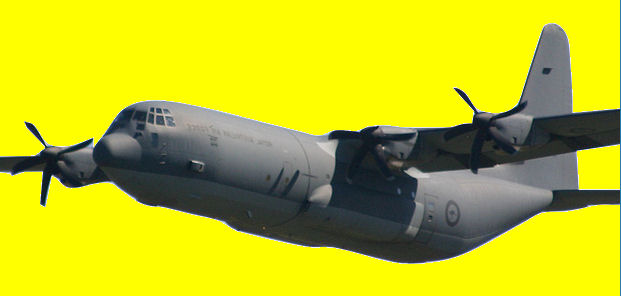

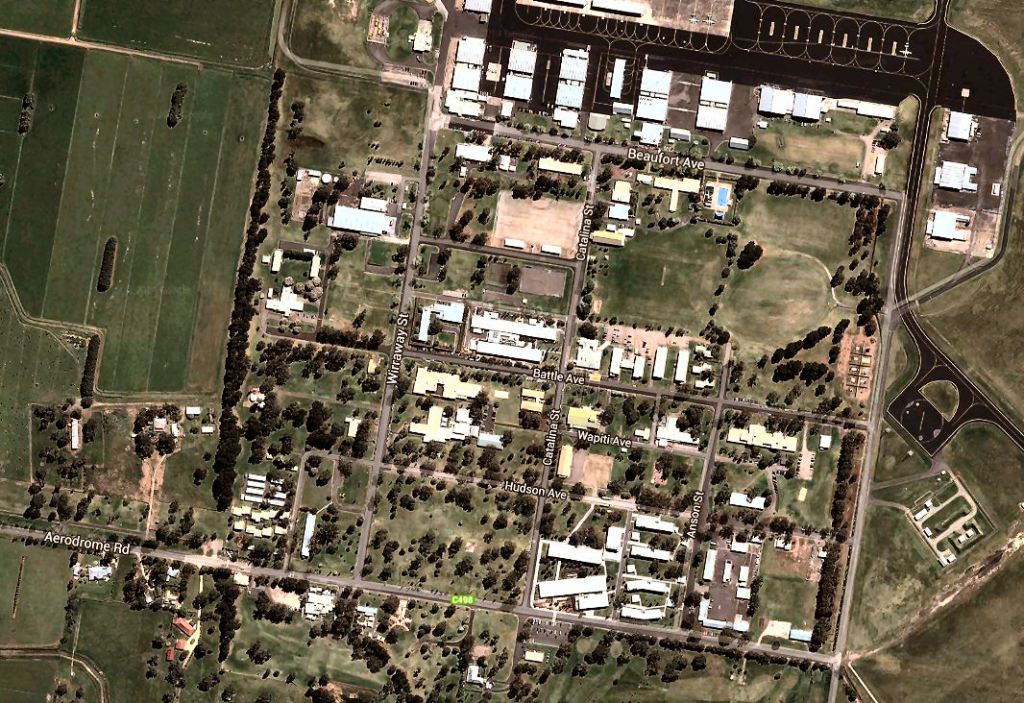
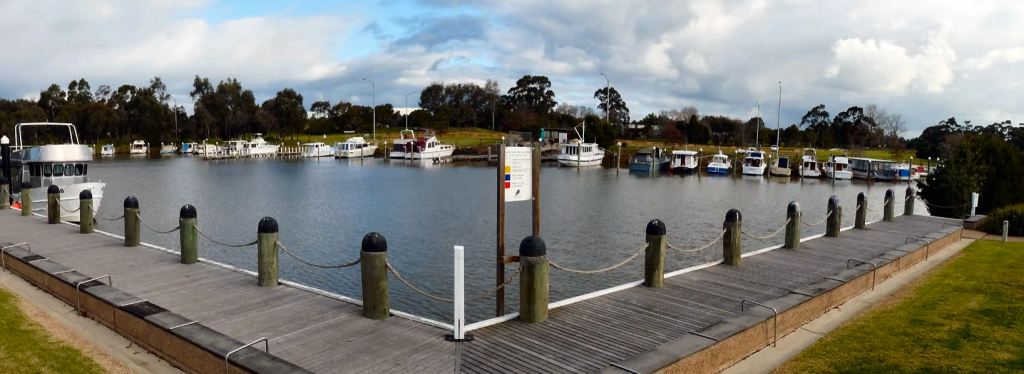
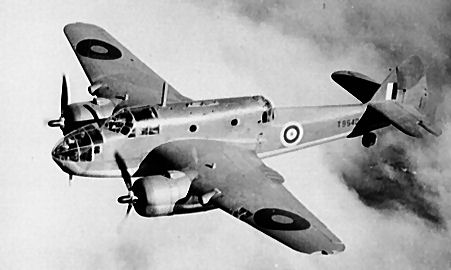 protection and maritime surveillance roles. By war’s end,
protection and maritime surveillance roles. By war’s end, 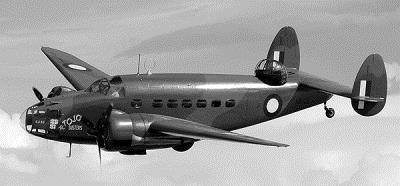 formation after failing to recover from a manoeuvre, killing six Central
Flying School staff. Six months later, a second display team, "The
Telstars" was formed, also flying Vampires and later changed to
Aermacchi MB-326 (Macchi) aircraft. The display team was disbanded in
May 1968 due to budget constraints and a shortage of available Macchi
airframes, then in 1970, to celebrate the 50th anniversary of the RAAF,
the current Roulettes aerobatic display team was reformed, once again
operating Macchi MB-326s. Today East Sale is
formation after failing to recover from a manoeuvre, killing six Central
Flying School staff. Six months later, a second display team, "The
Telstars" was formed, also flying Vampires and later changed to
Aermacchi MB-326 (Macchi) aircraft. The display team was disbanded in
May 1968 due to budget constraints and a shortage of available Macchi
airframes, then in 1970, to celebrate the 50th anniversary of the RAAF,
the current Roulettes aerobatic display team was reformed, once again
operating Macchi MB-326s. Today East Sale is 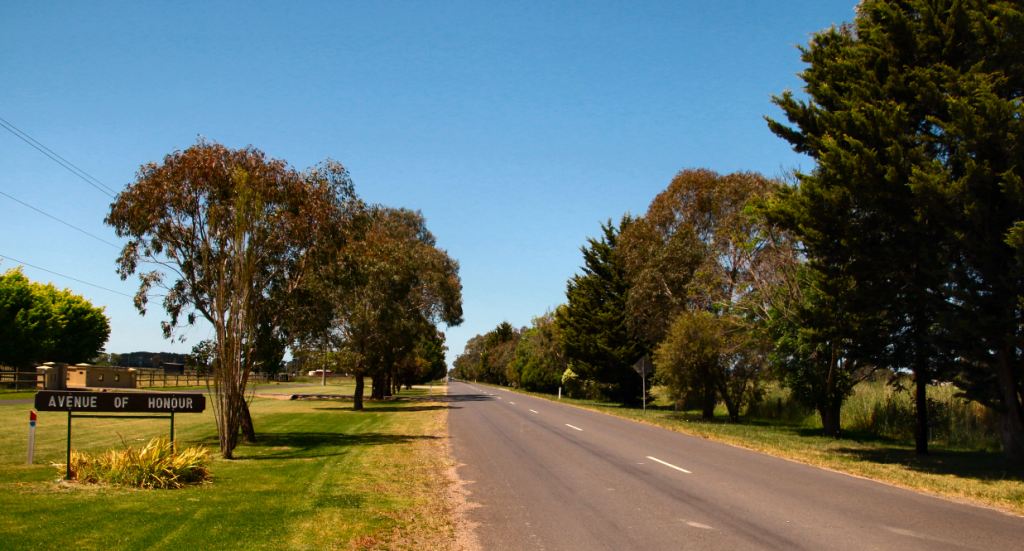
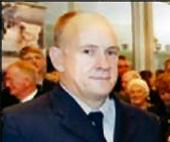 of security. Wing Commander James “Jim” Svede (right) is the CO of
Number 30 (City of Sale) Squadron which is responsible for tasks that
were once the domain of the old Base Squadrons and he and his team
arranged for us to have a guided tour of the base, to take a few pics
and to have a meal in the Airman’s mess and for that we thank him. We
must also thank MediaOps in Canberra which is always very helpful and
responsive to our requests. We had never been to Sale so we asked Ian
“Mitch” and Lyn Mitchell to come along and to make sure we didn’t miss
anything.
of security. Wing Commander James “Jim” Svede (right) is the CO of
Number 30 (City of Sale) Squadron which is responsible for tasks that
were once the domain of the old Base Squadrons and he and his team
arranged for us to have a guided tour of the base, to take a few pics
and to have a meal in the Airman’s mess and for that we thank him. We
must also thank MediaOps in Canberra which is always very helpful and
responsive to our requests. We had never been to Sale so we asked Ian
“Mitch” and Lyn Mitchell to come along and to make sure we didn’t miss
anything.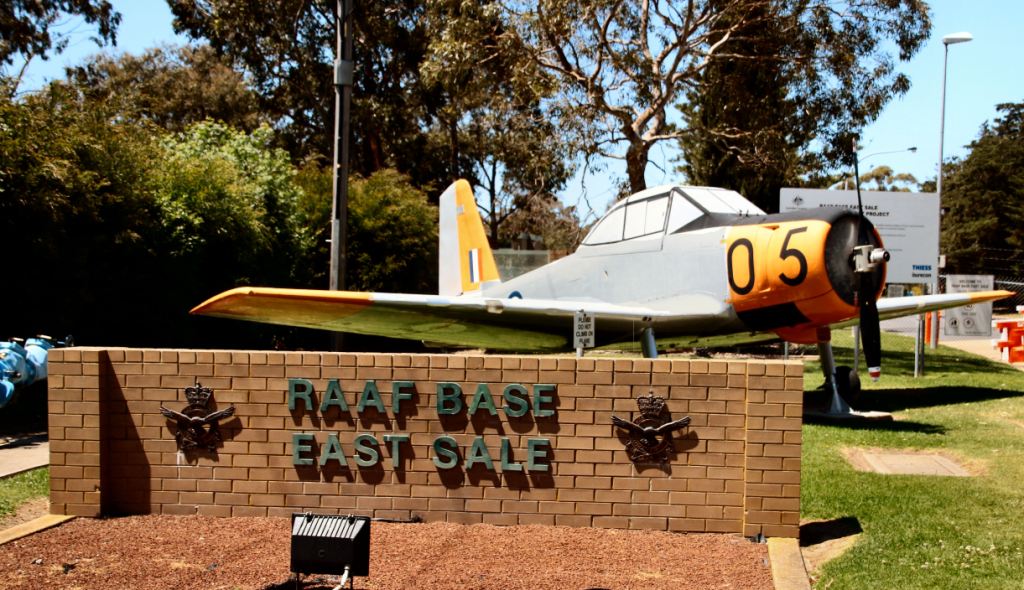
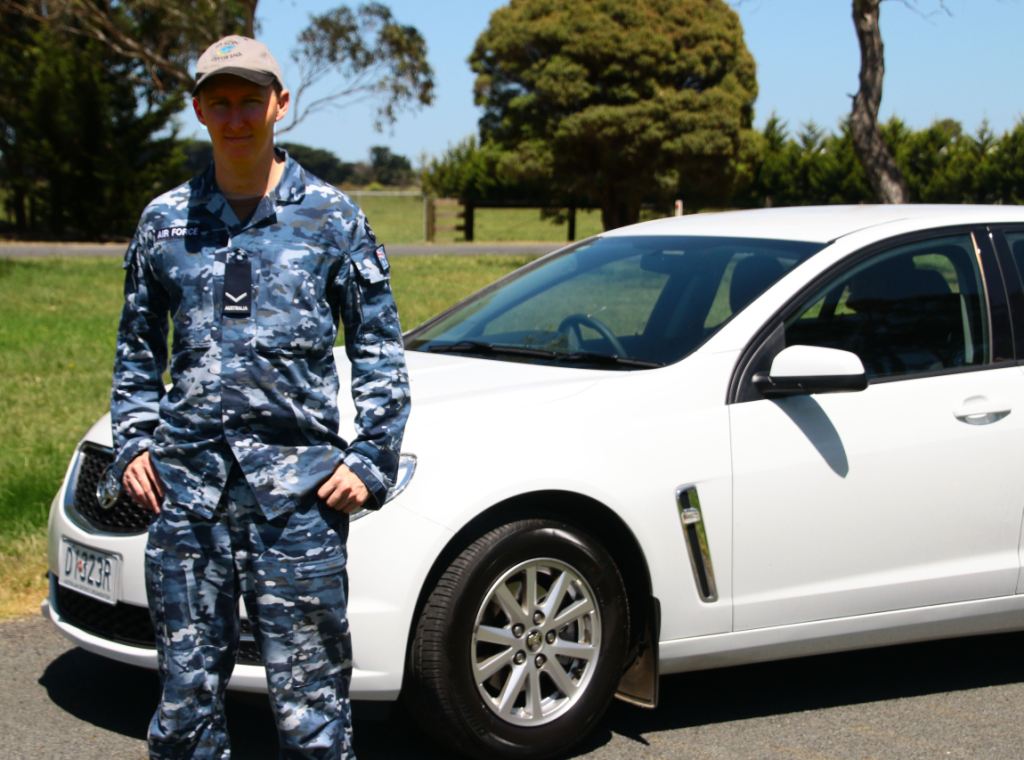
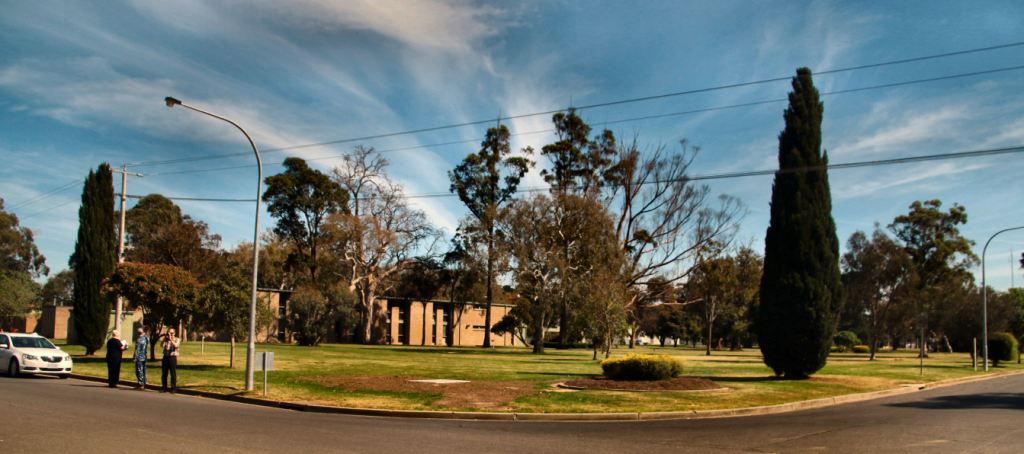
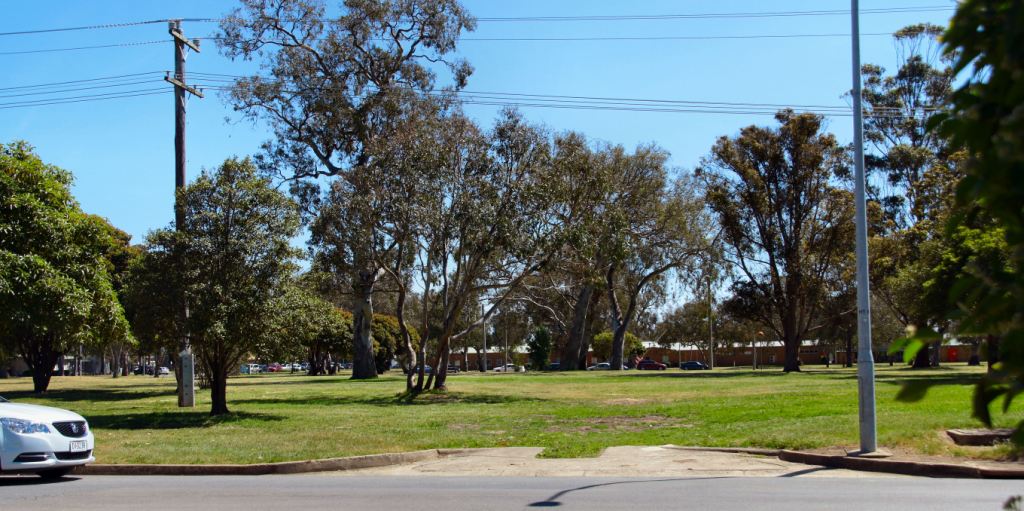
%20-%20Copy.jpg)
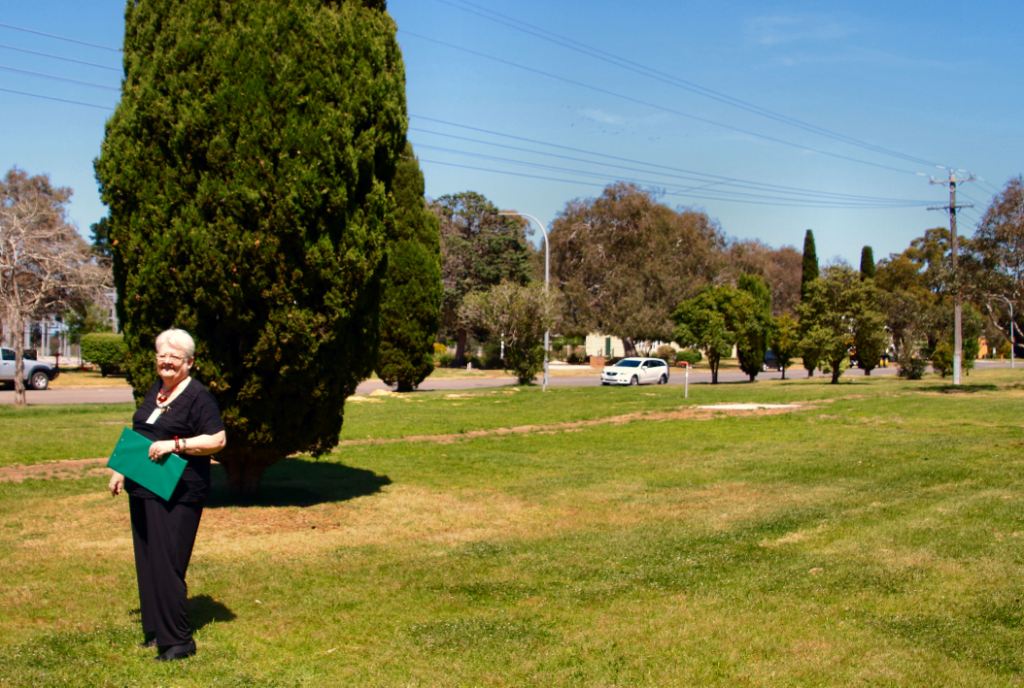
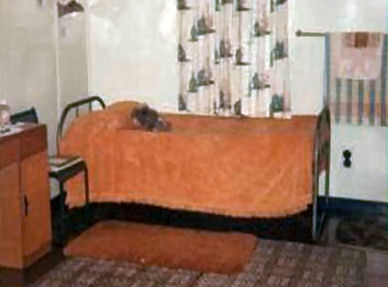
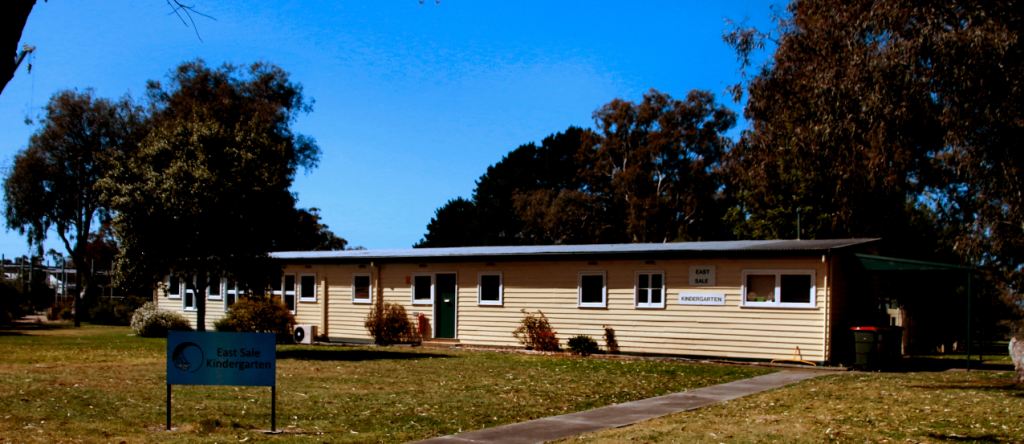
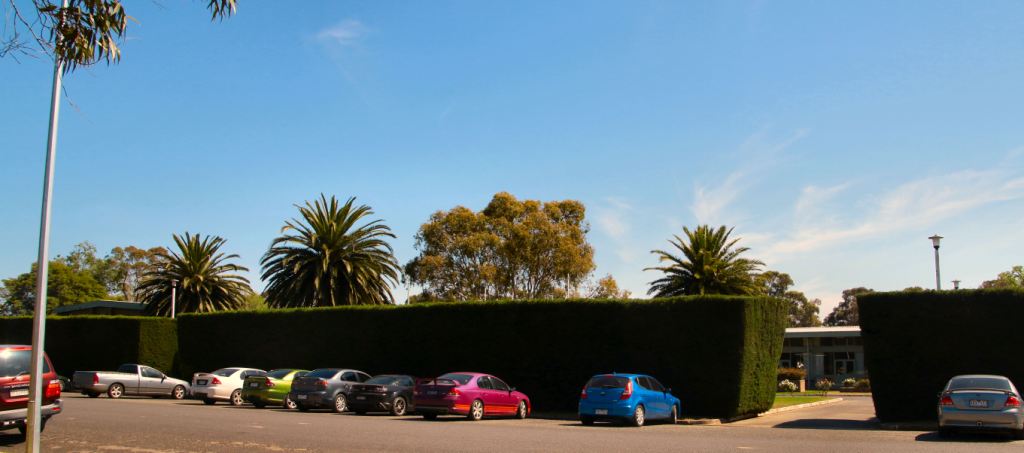
%20-%20Copy.jpg)
%20-%20Copy.jpg)
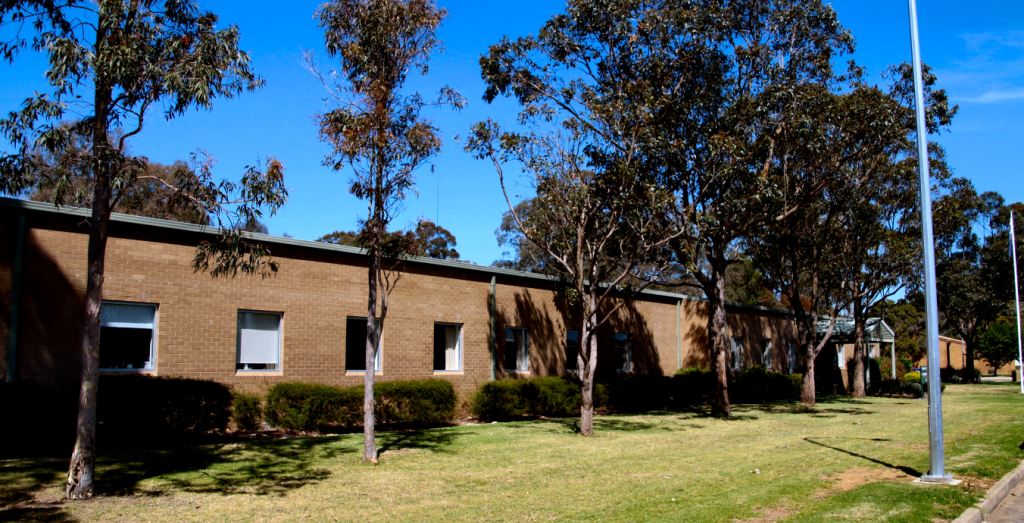
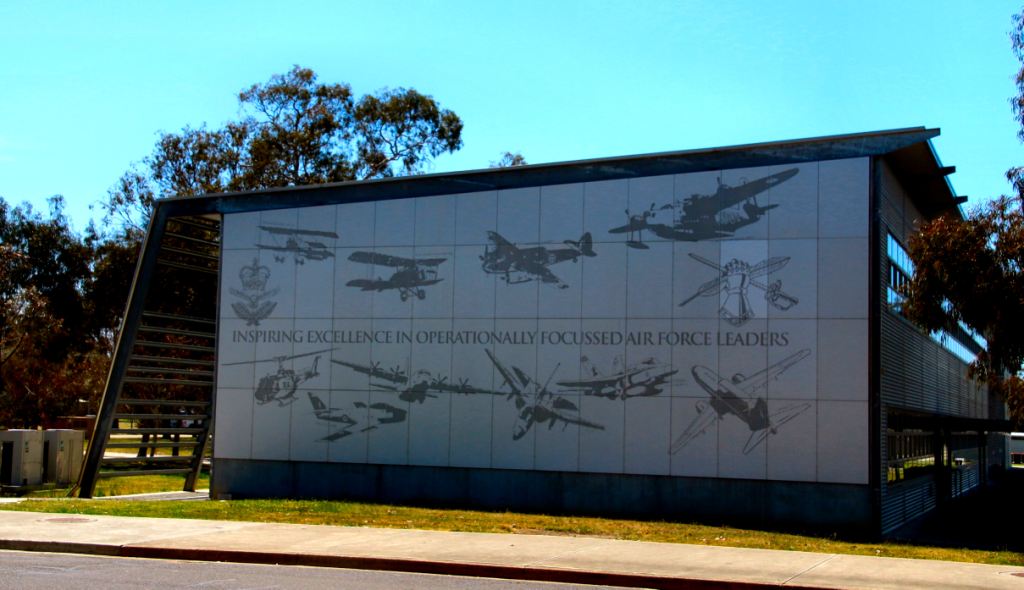
%20-%20Copy.jpg)
%20-%20Copy.jpg)
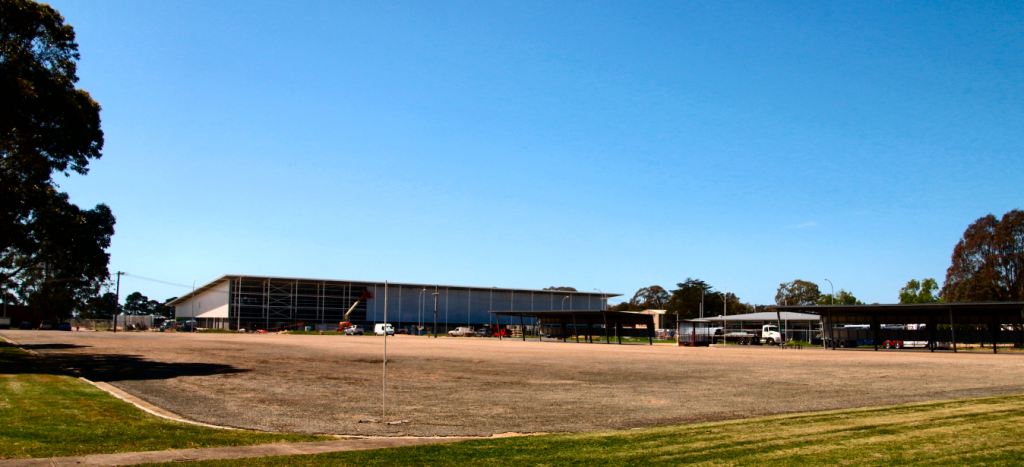
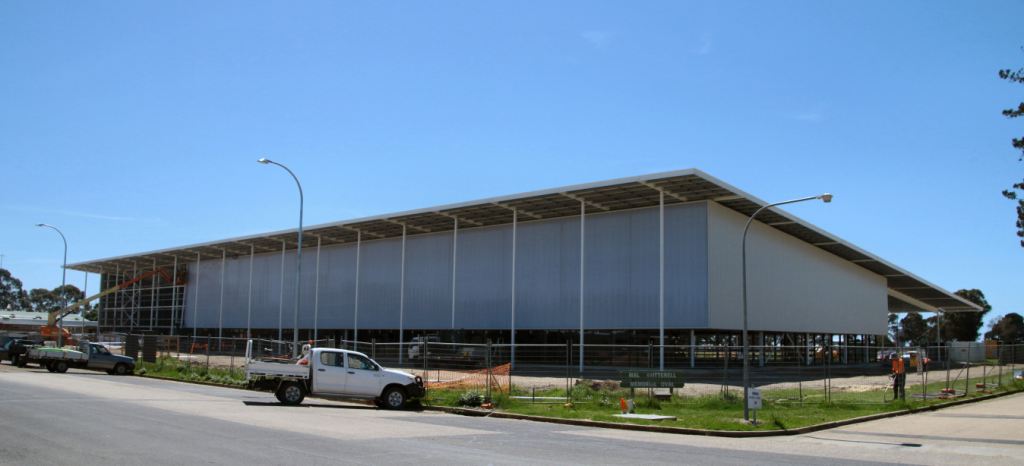
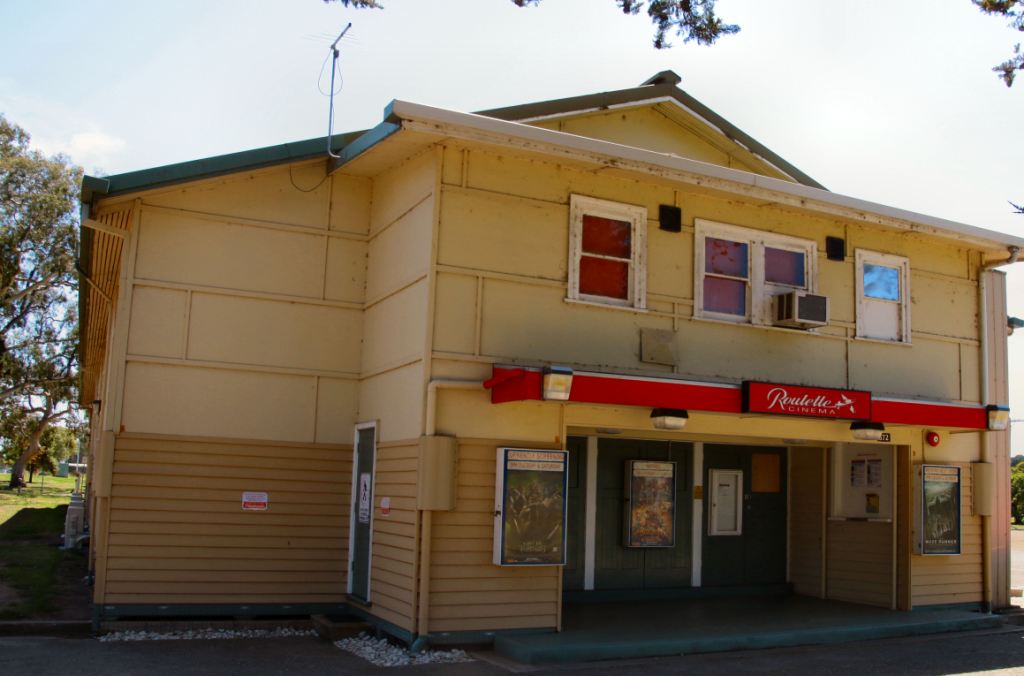
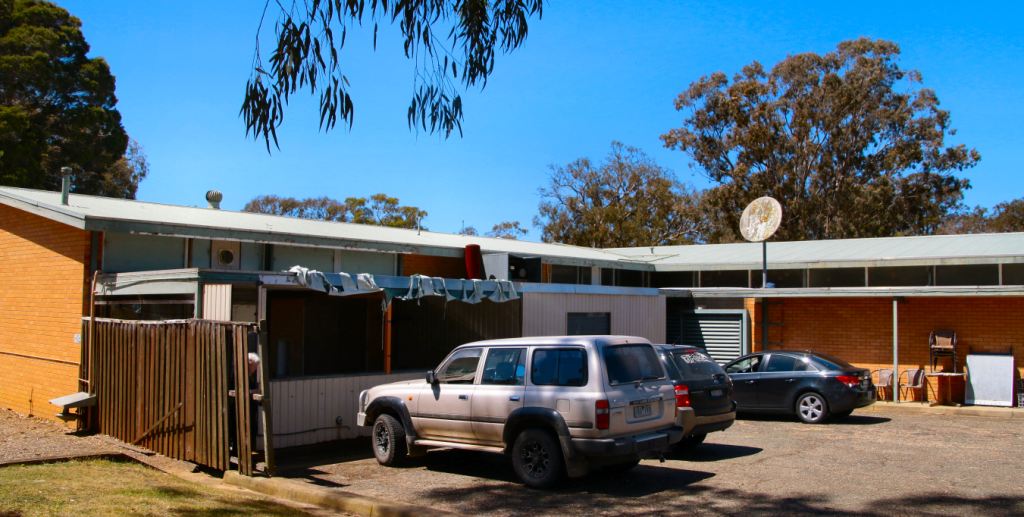
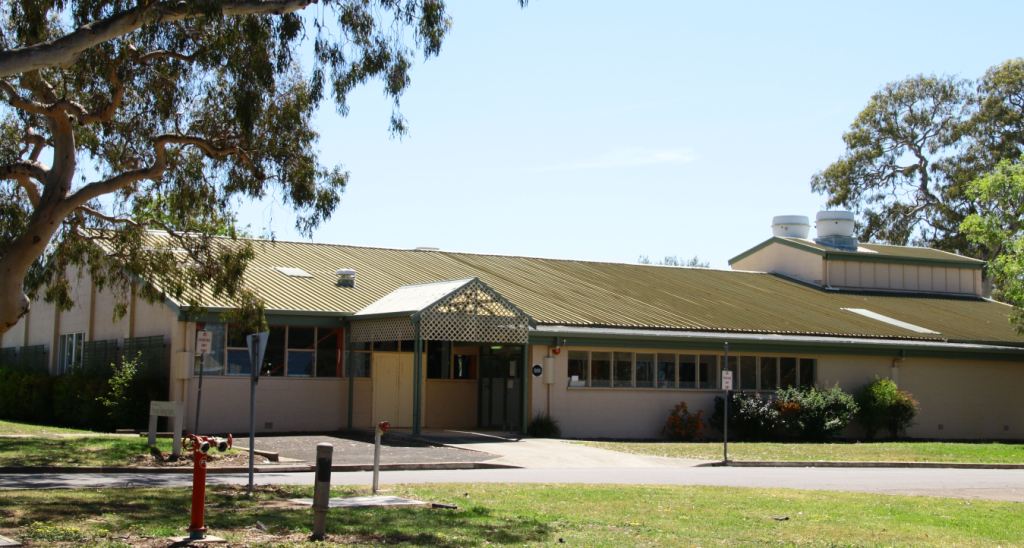
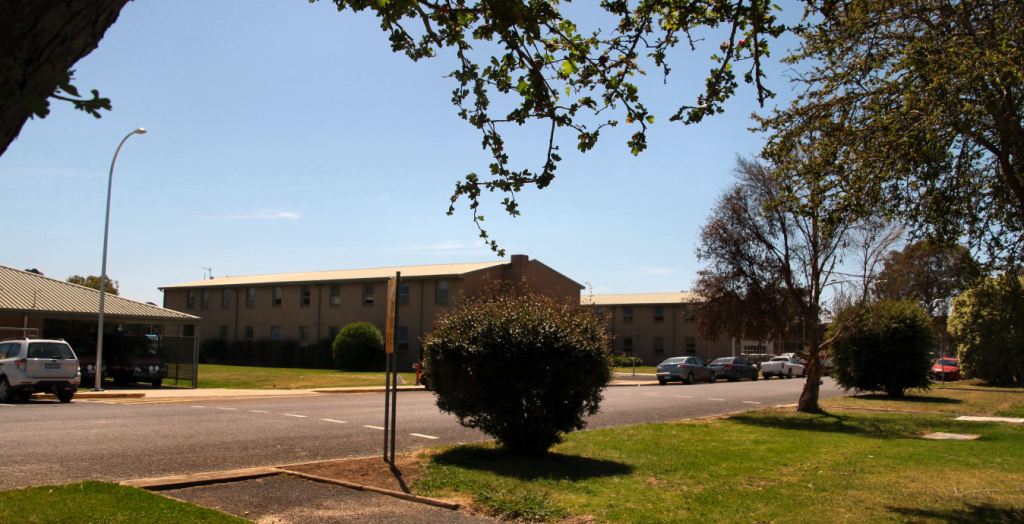
%20-%20Copy.jpg)
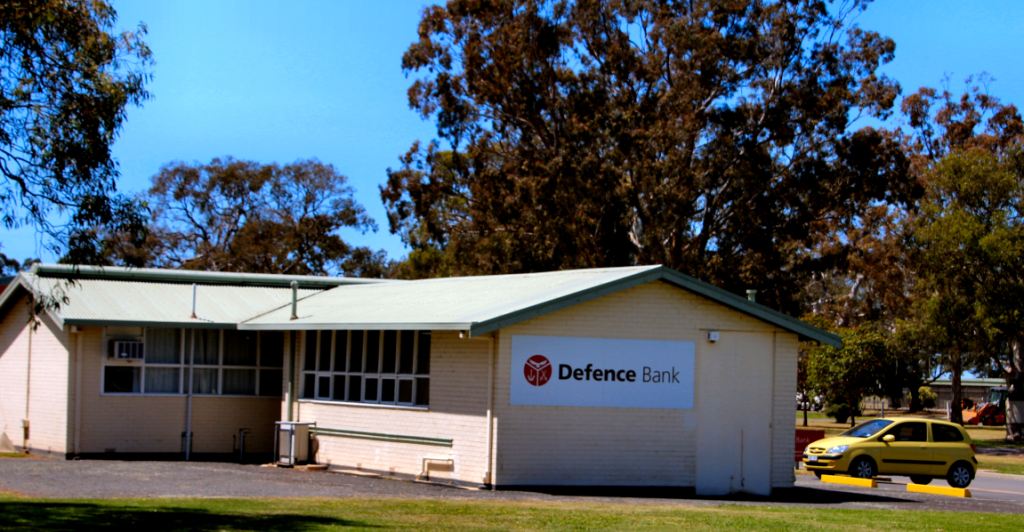
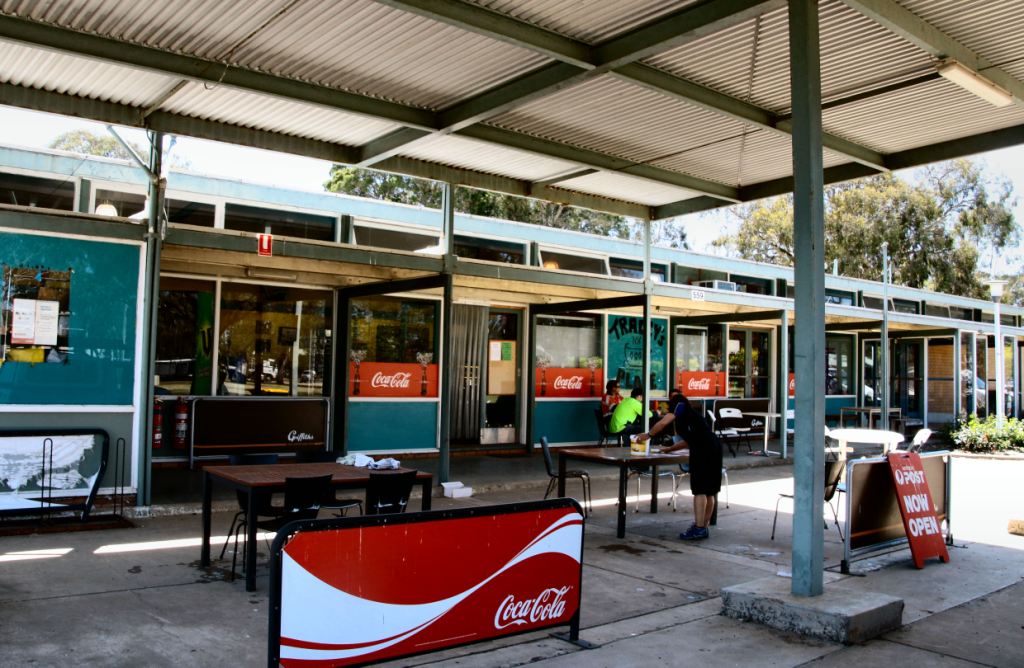
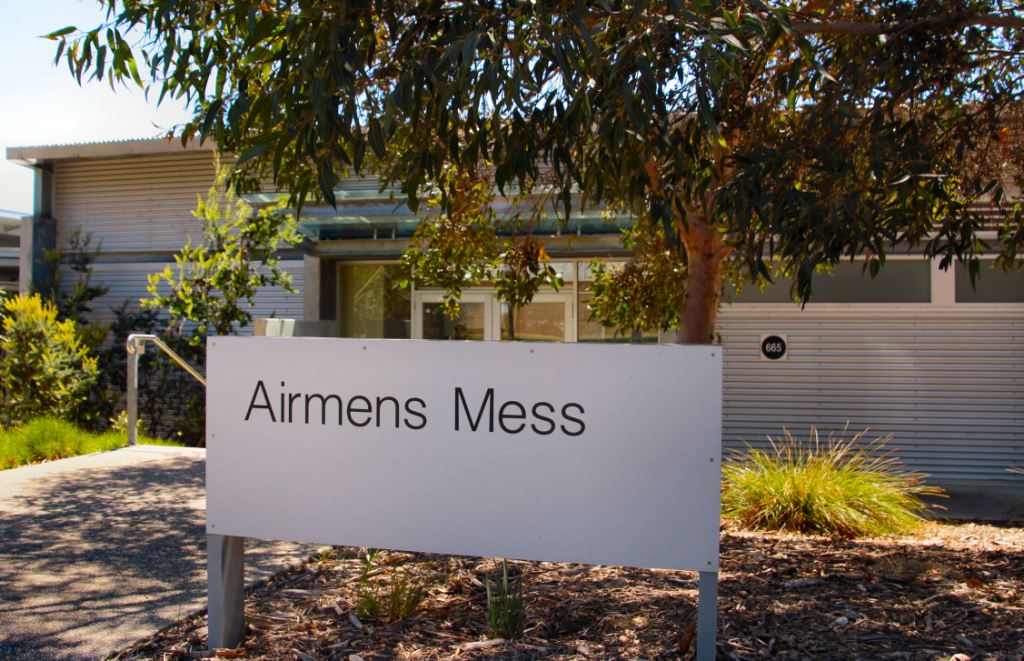
%20-%20Copy.jpg)
%20-%20Copy.jpg)
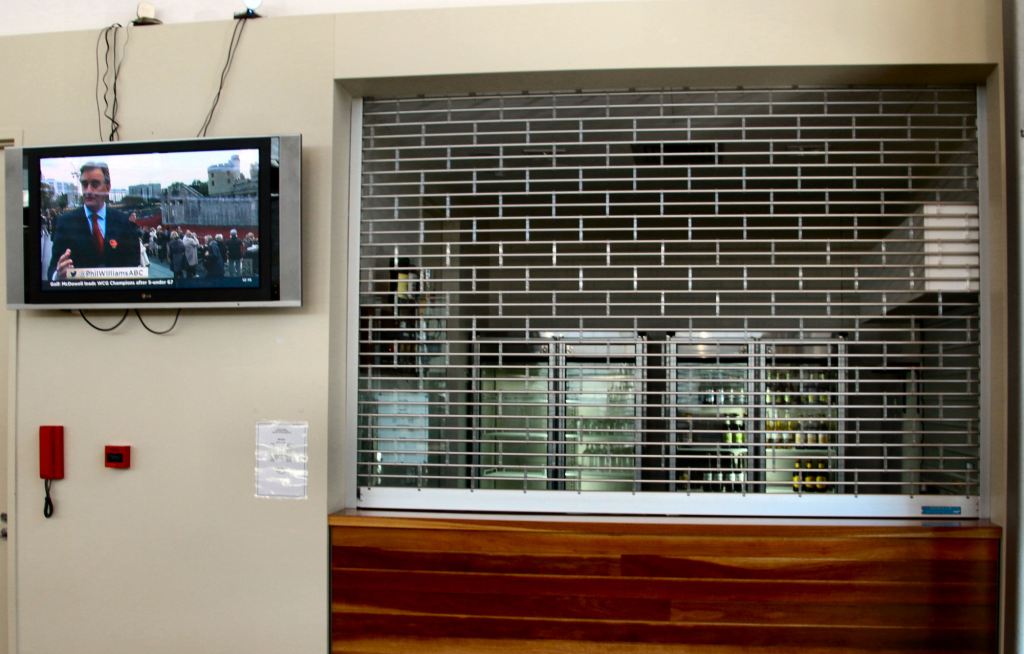
%20-%20Copy.jpg)
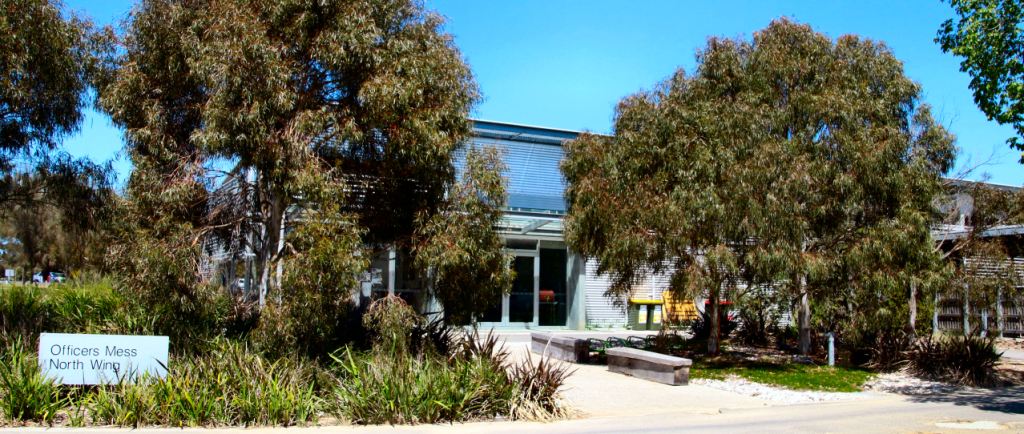
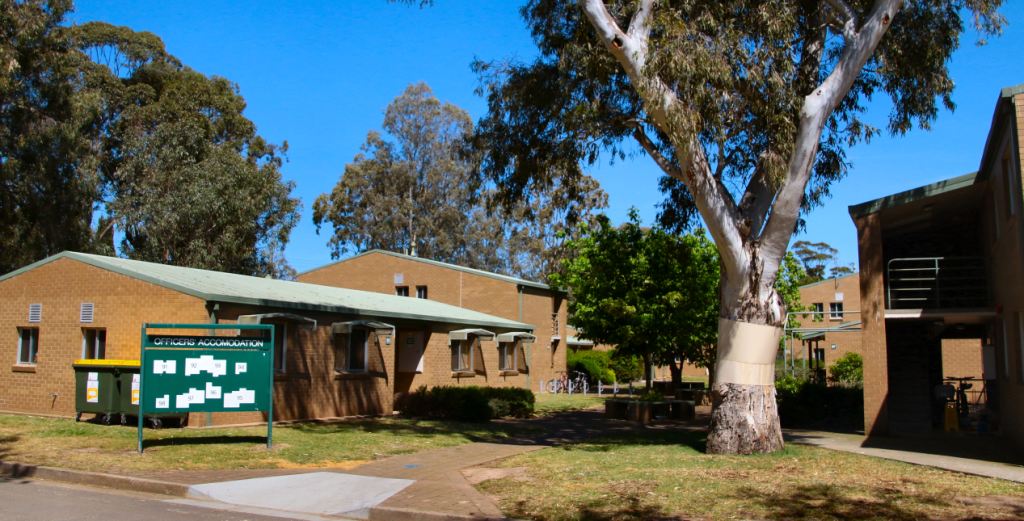
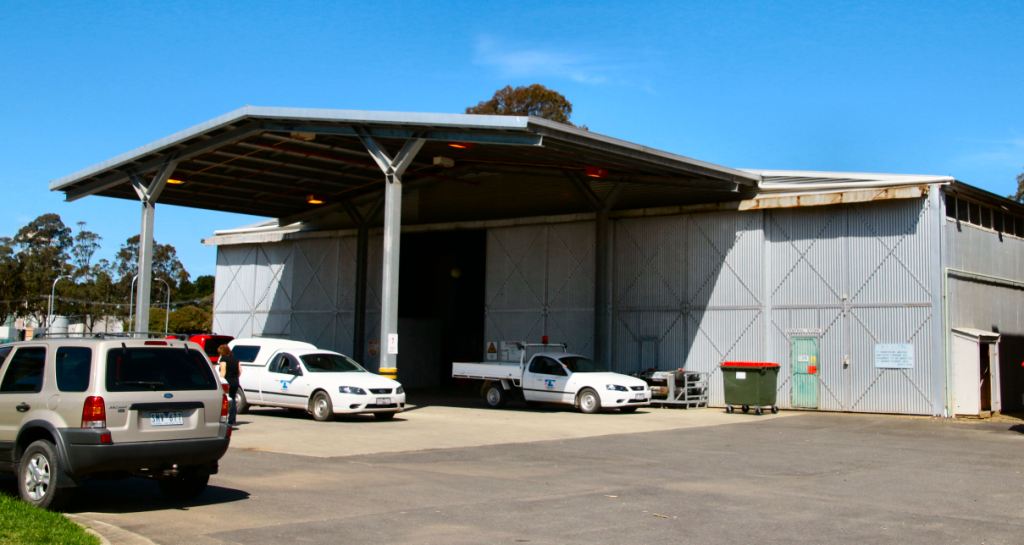
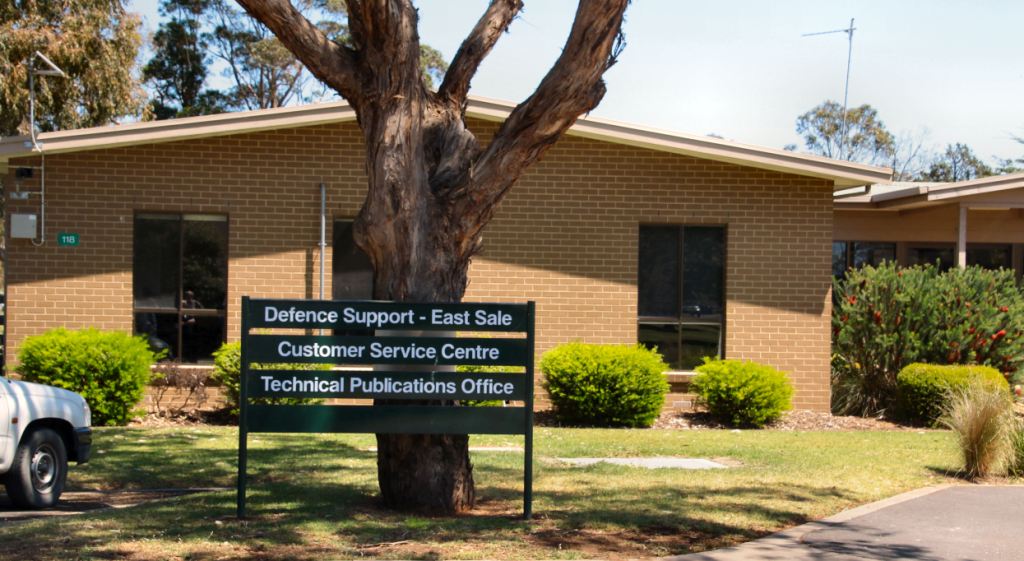
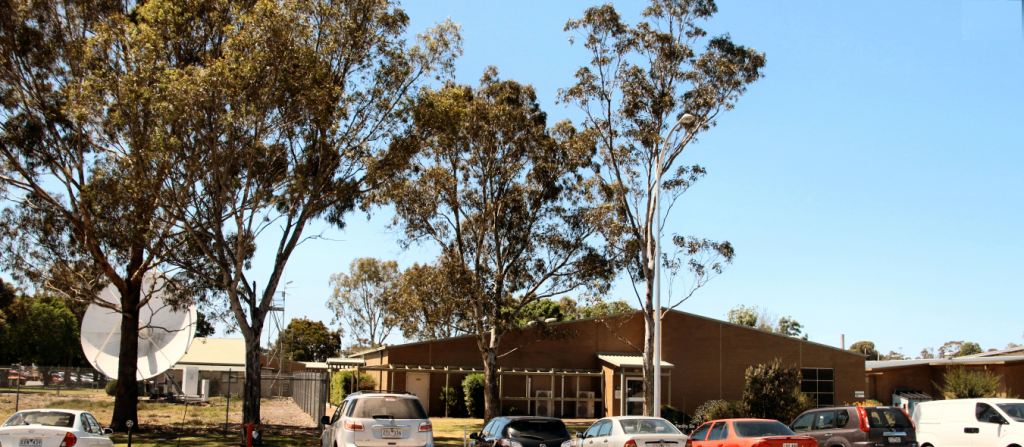
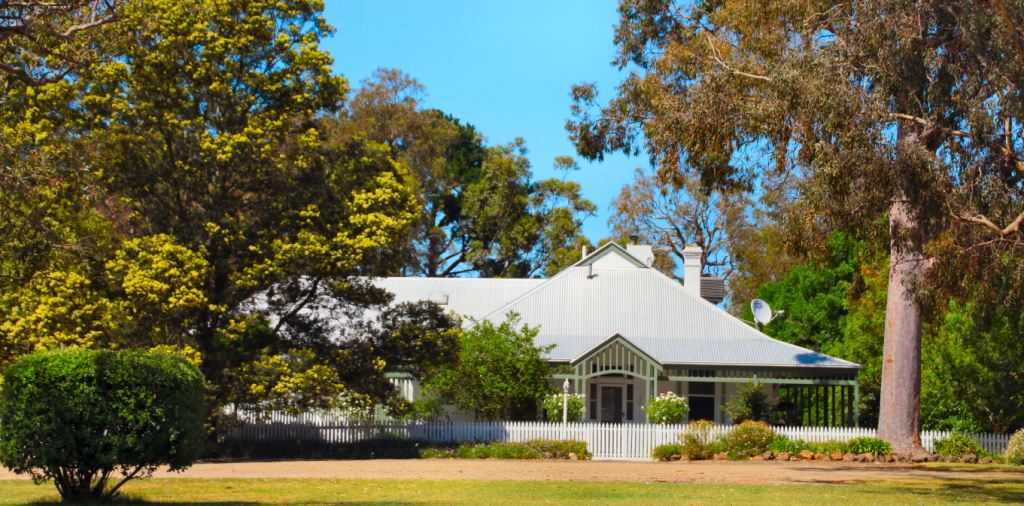
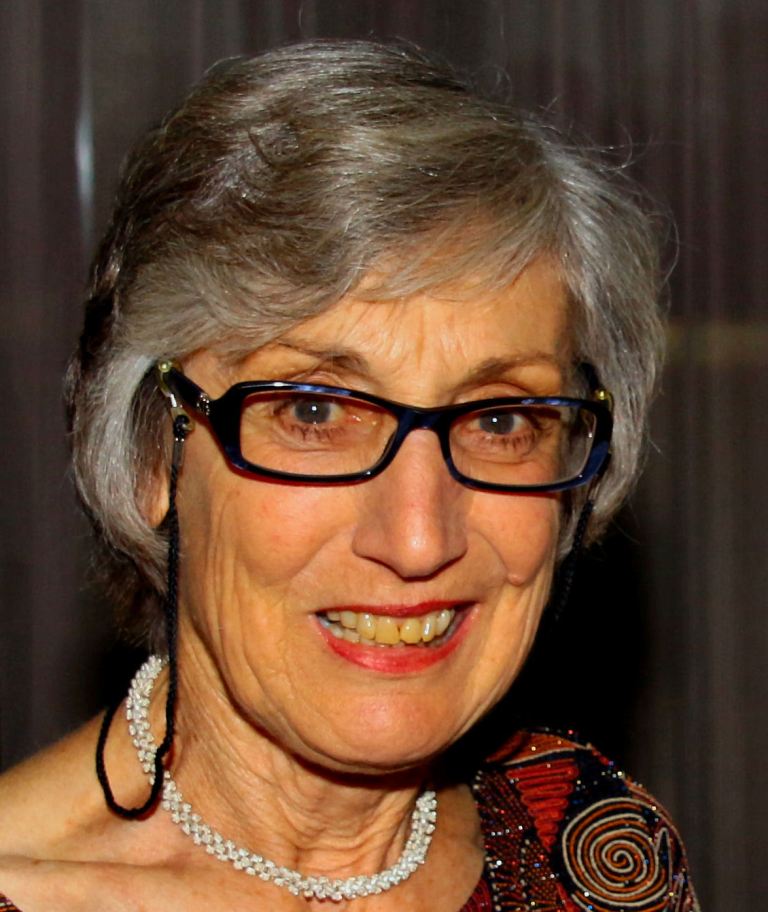
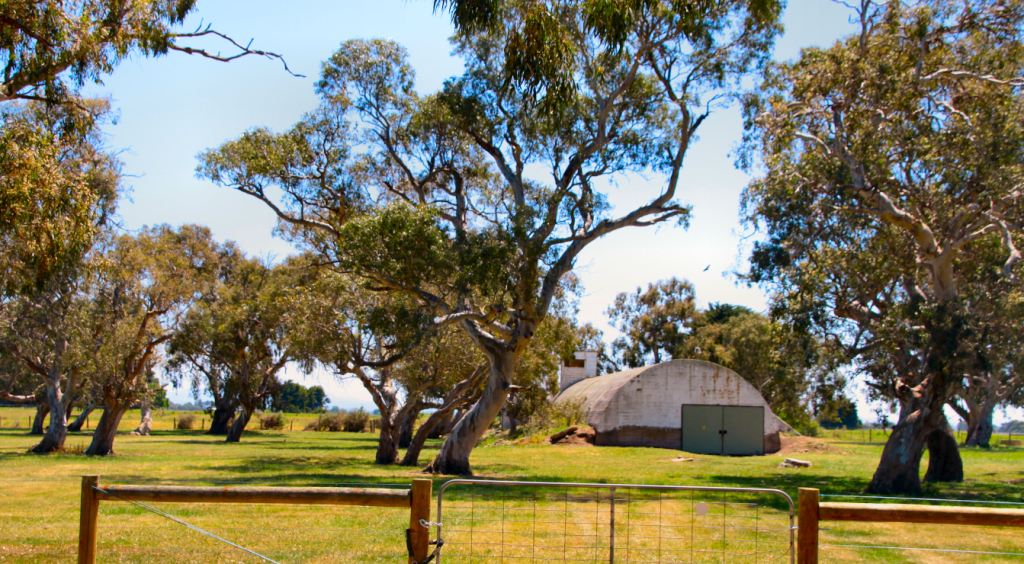
%20-%20Copy.jpg)
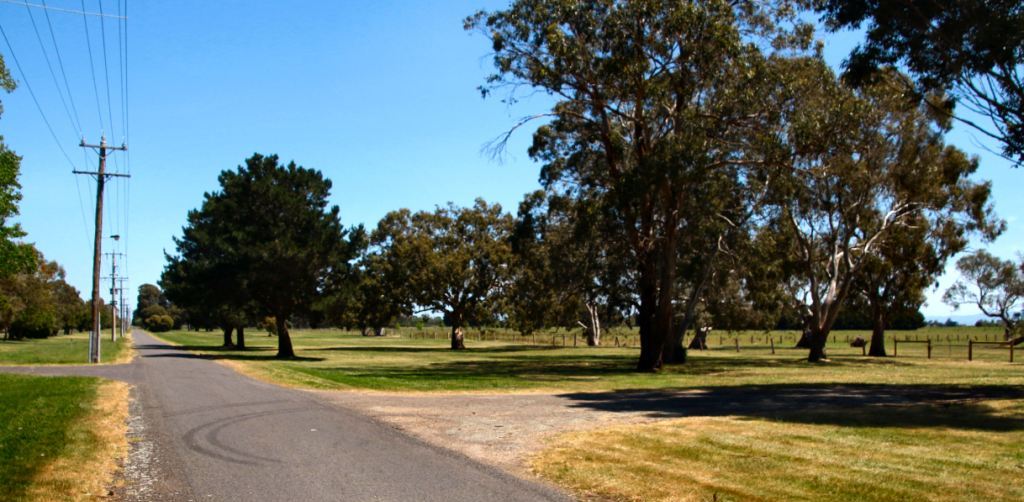

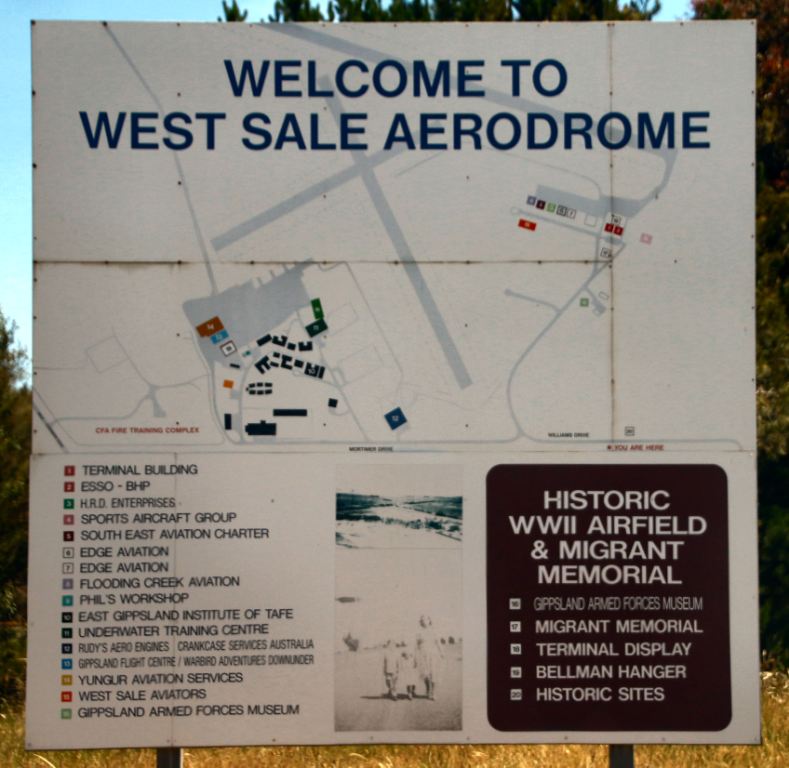
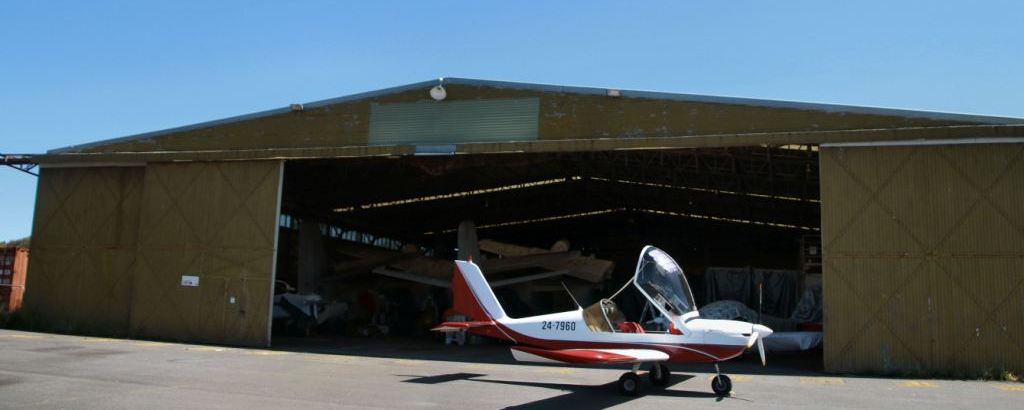
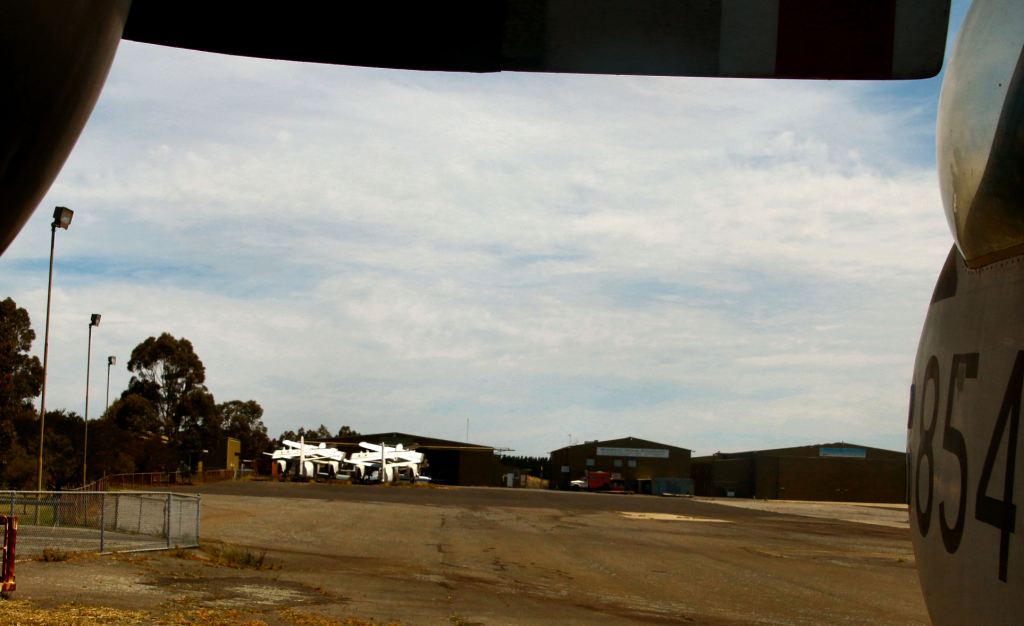
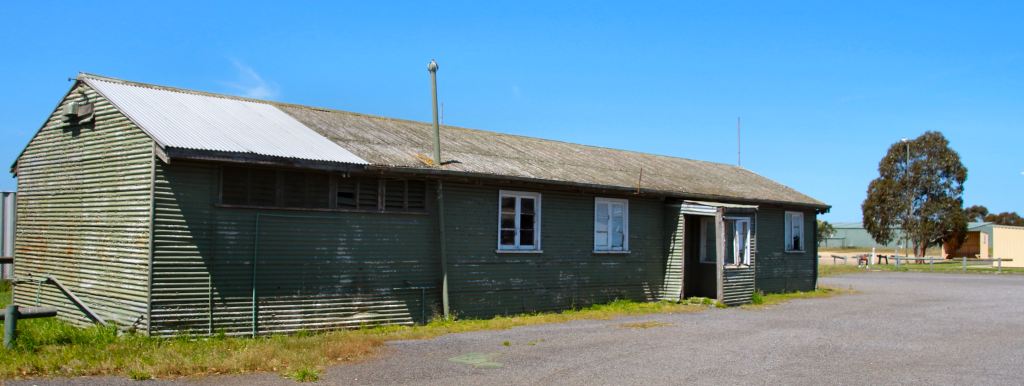
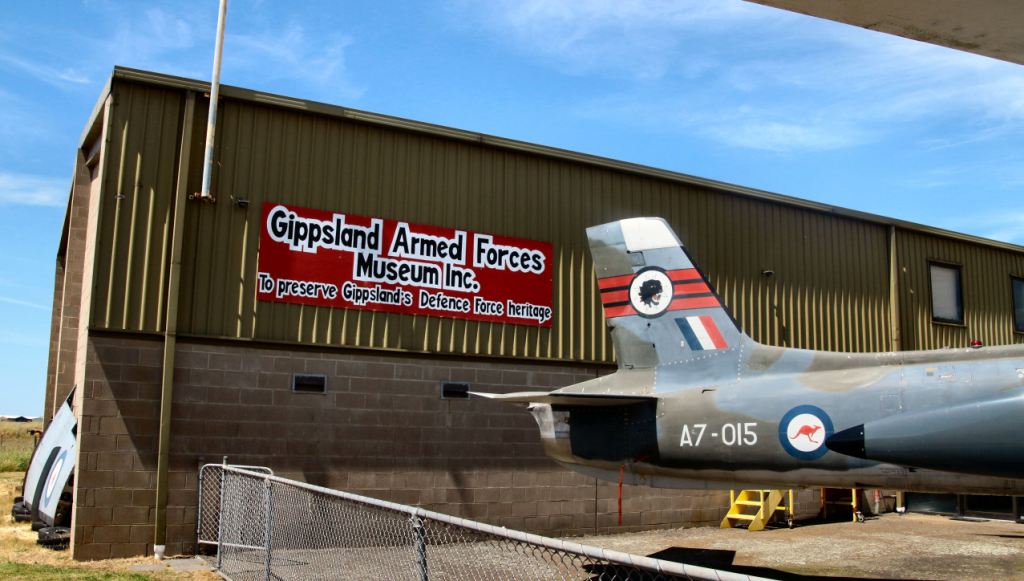
%20-%20Copy.jpg)
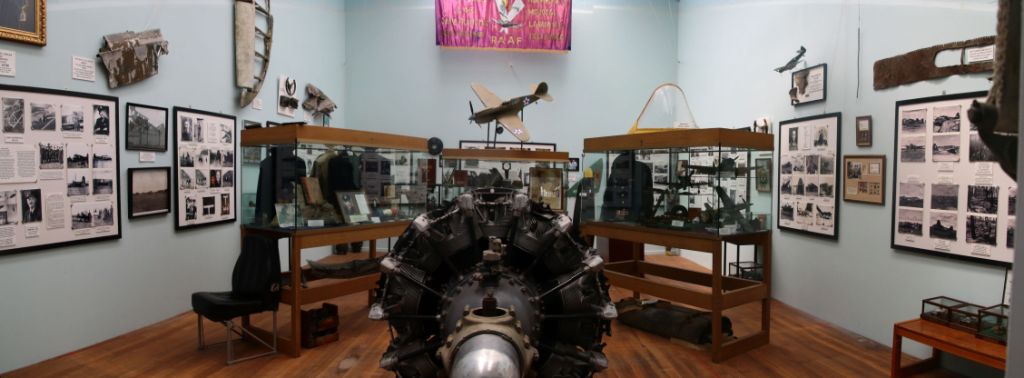
%20-%20Copy.jpg)
%20-%20Copy.jpg)
%20-%20Copy.jpg)
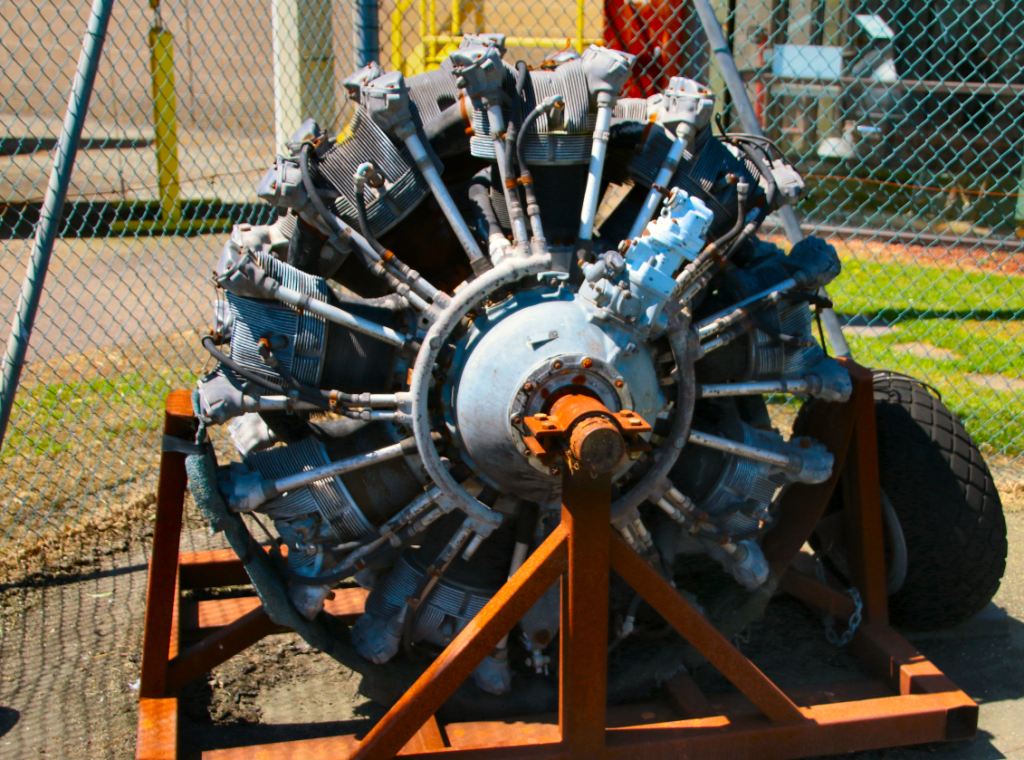
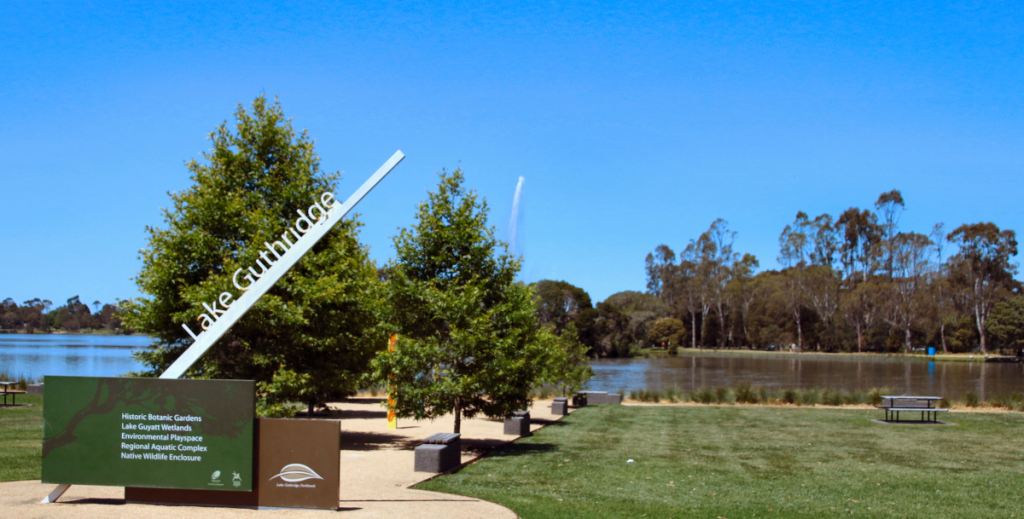
%20-%20Copy.jpg)
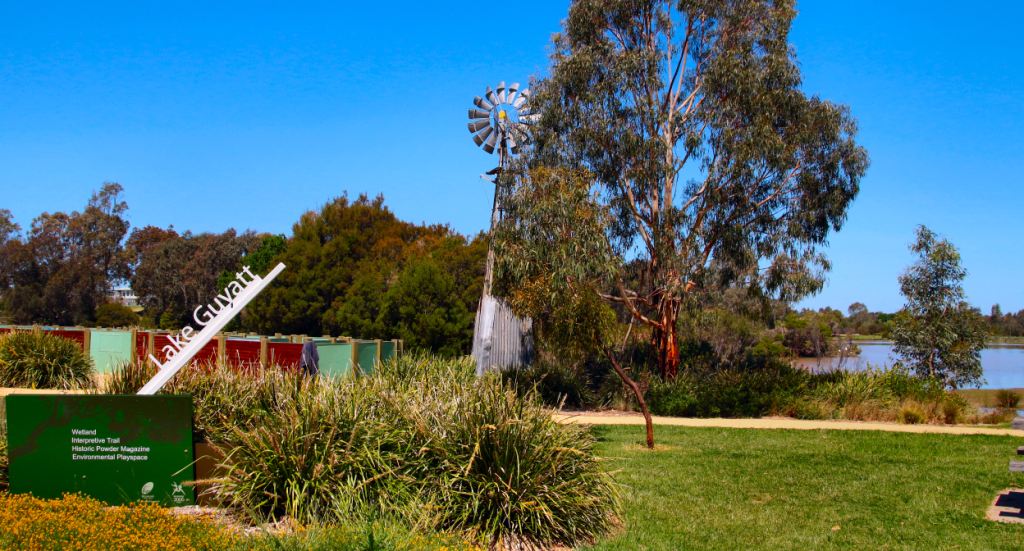
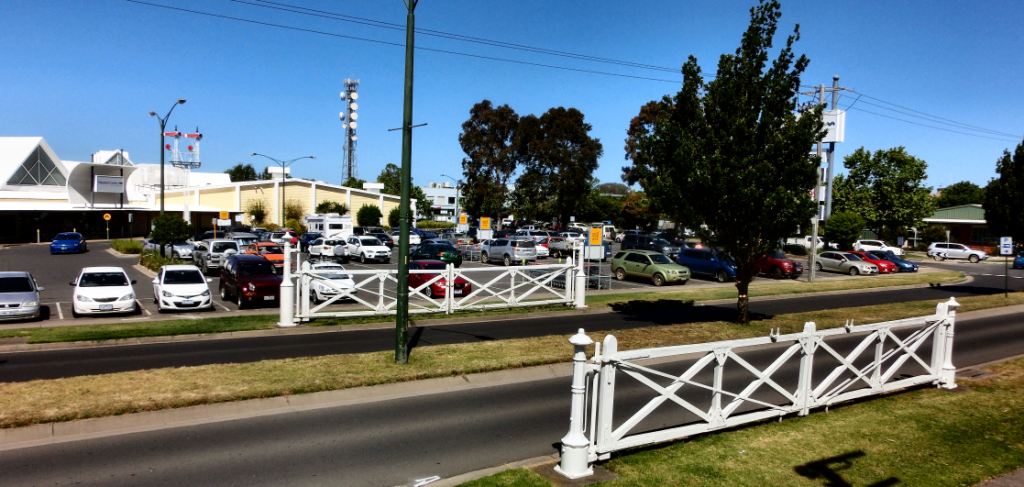
%20-%20Copy.jpg)
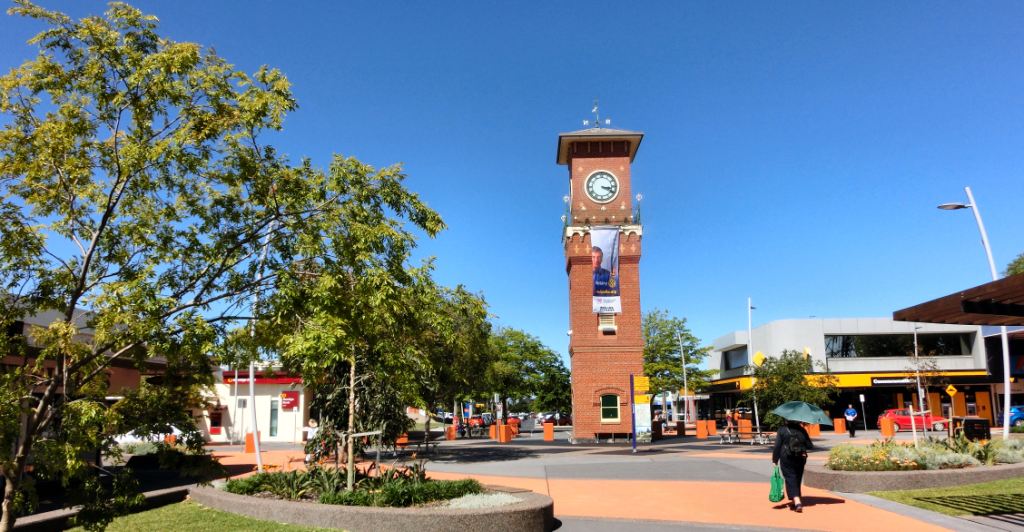
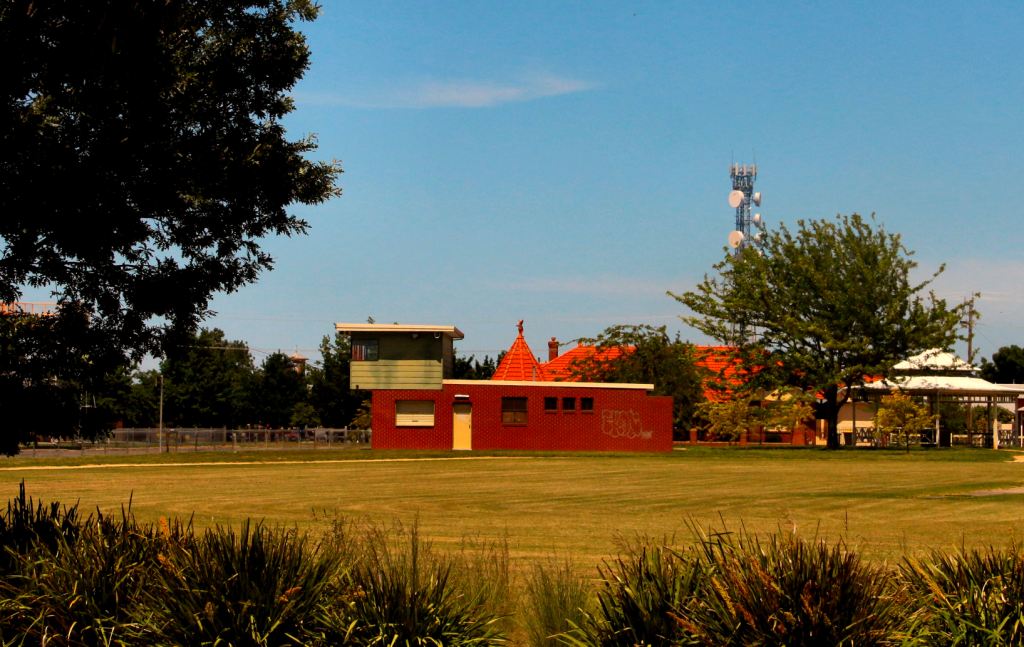
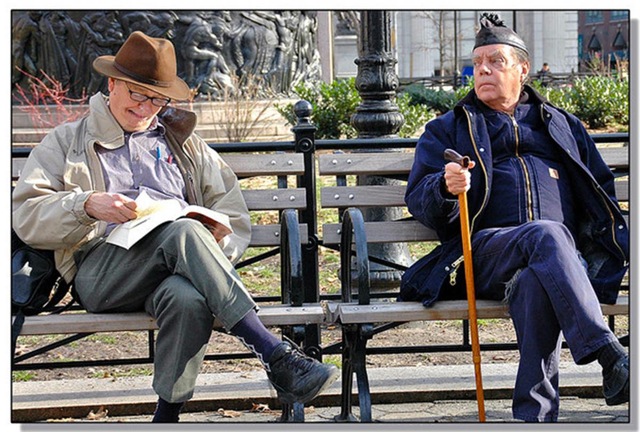 up for a week or so, Sam really got worried. However, since the
only time they ever got together was at the park, Sam didn't know where
Russ lived, so he was unable to find out what had happened to him.
up for a week or so, Sam really got worried. However, since the
only time they ever got together was at the park, Sam didn't know where
Russ lived, so he was unable to find out what had happened to him.